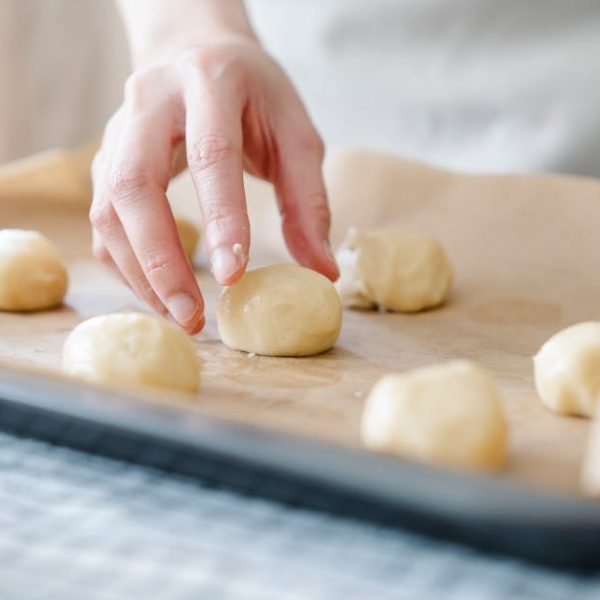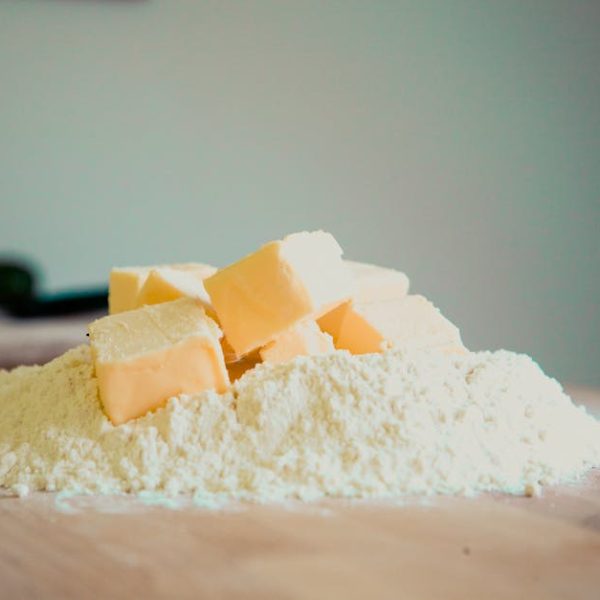Bread – the staple of many cuisines worldwide, and the symbol of basic nourishment. It’s a versatile food item found in almost every household and comes in a variety of types – from classic white to whole wheat, sourdough, rye, and more. As one of the most commonly consumed food items, it’s pretty essential to know the best ways to store and preserve it. And that’s what we’re going to talk about today – the 7 quick tips to perfectly preserve your bread.
Understanding the Importance of Proper Bread Storage
You’ve likely seen it before, perfectly good bread going moldy or becoming dry and stale before you could finish it. Not only is this a shame for the delicious loaf you brought home, but it’s also unnecessary food waste. This often occurs due to incorrect storage which fails to consider key spoilage factors such as temperature, humidity, light, and air contact.
Here are a few tips:
• Store your bread in a cool, dry, and dark place, where it can stay fresh without the risk of molding.
• Keep it away from direct sunlight. Light can increase the temperature causing the bread to dry out.
• Avoid storing bread near strong odors. Bread can easily absorb those odors, altering its taste.
Effective Use of Bread Boxes
If you’ve ever wondered why breadboxes have been a kitchen staple for decades, it’s because they provide an ideal environment for bread storage. These charming kitchen accouterments come in different types ranging from wooden, stainless steel, to plastic. While all breadboxes function by limiting air contact and protecting bread from pests, different materials offer varying degrees of breathability, which can affect moisture retention and thereby, the life of your loaf.
Here’s a quick checklist for using bread boxes:
• Select a bread box large enough to comfortably store your bread, but not too large as excess air can speed up spoilage.
• Make sure the box is clean and does not contain crumbs from old bread — a breeding ground for molds.
• If your bread box has a ventilation system, adjust it according to the humidity of your area.
Storing Bread at Room Temperature
Despite popular misconceptions, it’s best to store bread at room temperature as it keeps the bread fresh longer than refrigeration. It maintains the texture and flavor that gets lost when bread is refrigerated, due to the staling process caused by revoked moisture.
However, there are some downsides as well. Bread stored at room temperature in a humid climate may develop molds faster. Therefore, careful consideration of the local climate and how long you’ll keep the bread are important factors to consider.
Fridge Vs. Freezer: What’s Best for Your Bread
While refrigeration is suitable for many types of food, bread isn’t one of them. The cold temperature of the fridge stales the bread faster than at room temperature. This happens because the cool environment expedite the recrystallization of starches in the bread, making it tough and stale.
Instead, if you want to store bread for an extended period, consider the freezer which can halt the staling process indefinitely, especially when you’re dealing with more slices than you need.
Here’s a quick comparison between the two:
| Refrigerated Storage | Freezer Storage | |
|---|---|---|
| Effect on Bread | Speeds up staling | Preserves freshness |
| Suitable for | Short-term storage | Long-term storage |
In the next piece we continue the dialogue with reheating techniques, dealing with excess bread and buying tips.
Revoking Staleness: Reheating Techniques for Bread
When you have bought or baked more bread than you can consume before it stales, don’t worry, there is hope! You can bring your dried-out loaf back to life with quick, easy reheating techniques. Believe it or not, reheating bread will make it taste and feel freshly baked again. The most popular methods for reheating bread are using the oven, toaster, or microwave.
Here are some pro tips:
• Pre-heat the oven to 300-325 degrees, wrap your bread in foil, and heat it for 15-20 minutes. Voila! Soft and supple bread awaits.
• For a quicker solution, wrap your bread slice in a damp paper towel and heat it in the microwave for 10 seconds. Do not exceed this time as you may end up with chewy, tough bread instead.
• A toaster works best for sliced bread or bagels. It heats quickly and provides a nice, crispy finish to the bread.
Dealing With Excess Bread: Opt for Bread Crumbs or Croutons
If you’ve over-bought or baked too much bread, or just have a few slices left that are going stale, don’t toss them. Make bread crumbs or croutons instead. Both give an excellent crunch to your salads and savory dishes. To make breadcrumbs, just toast your bread slices and grind them in a food processor. For croutons, cut the bread into cubes, toss them with olive oil and seasoning, and bake them until crisp.
Here are some best practices:
• Store your bread crumbs or croutons in an airtight container to ensure they stay crispy.
• Use older, drier bread for the best results. Fresh bread can turn chewy or gummy when baked or ground.
• Remember, homemade bread crumbs and croutons should ideally be used within a week or stored in the freezer for longer use.
Buy Only What You Need: Preventing Bread Waste
The most effective way of ensuring your bread doesn’t go to waste is to buy only as much as you need. Smaller families or individuals could consider types of bread with a longer shelf life. Purchasing fresh bread more frequently, rather than in bulk, can also help maintain the quality of your bread.
Here’s a quick checklist:
• Consider your family’s bread-eating habits when shopping. Opt for smaller loaves if you’re a small family or live alone.
• Buy bread with preservatives if you intend to keep it longer. These types of bread tend to last longer than preservative-free versions.
• If you find that you have too much bread on your hands, remember to toast, freeze, or repurpose the bread before it spoils.
In conclusion, wrapping your bread tightly, using a bread box, understanding the effect temperature can have, and being smart about your bread purchases can make a huge difference in maintaining the freshness of your bread, and ultimately, reducing food waste.
Key Takeaway:
- Proper bread storage is essential in preventing spoilage. Store bread in a cool, dry, and dark place — away from direct sunlight and strong odors.
- Bread boxes are a great tool for preserving bread. Choose one that suits your needs in terms of size and material.
- Room temperature storage maintains the texture and flavor of the bread, but care must be taken in humid climates to prevent mold development.
- The refrigerator may cause bread to stale faster than room temperature, while the freezer can effectively prolong the freshness of the bread.
- Reheating is a useful technique to refresh stale bread, with methods including oven heating, microwave, and toasting.
- Leftover bread can be successfully used to make bread crumbs or croutons.
- Prevent waste by buying bread according to your consumption needs and considering bread with longer shelf life for smaller households.
Preserving the freshness of your bread is all about understanding the factors affecting its quality and acting accordingly. With the tips provided, you can now enjoy your bread at its best, reducing unnecessary waste and making the most of your loaves.
FAQs
Q: Can I store bread in a plastic bag?
A: Certainly! If you don’t have a bread box, a plastic bag is a good alternative. It can help keep moisture in and protect your bread from drying out. But ensure it’s not completely airtight as it might create a perfect climate for mold growth.
Q: I live in a very humid area. What’s the best place to store bread?
A: If you live in a humid area, bread stored at room temperature might develop mold faster. In this case, the freezer would be an ideal choice for long-term bread storage.
Q: What can I use besides a bread box to store bread?
A: If you don’t have a bread box, a bread bag (whether plastic or cloth), a large kitchen drawer, or even a microwave can serve as a good place to store your bread.
Q: Can I store different types of bread in the same bread box?
A: Yes, it’s perfectly fine to store different types of bread in the same bread box. However, keep in mind that breads with strong flavors or scents might transfer these to other breads.
Q: How long can I keep the bread crumbs or croutons I made from stale bread?
A: Homemade bread crumbs and croutons can be stored in an airtight container for up to a week at room temperature. If you want to keep them fresh for longer, you can freeze them.
Do explore more articles on my website and feel free to share this article with your friends and family to help them keep their bread fresher for longer!






